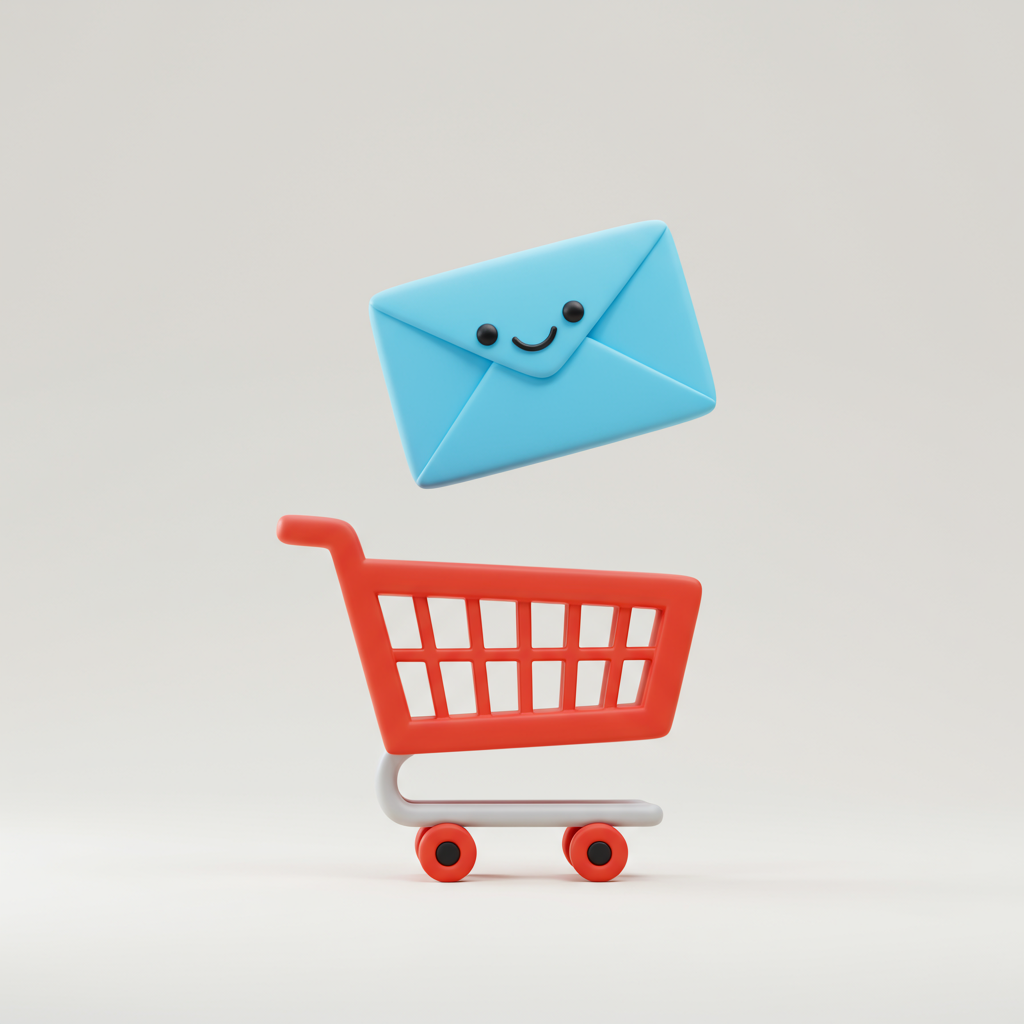Unlock lost revenue with a powerful, personalized email strategy designed for Shopify merchants.
As a fellow merchant, I understand the frustration of an abandoned cart. You’ve worked hard to attract visitors to your Shopify store, showcase your products, and guide them through the shopping experience, only for them to leave right before completing their purchase.
It’s a common scenario in e-commerce, but it doesn’t have to be a dead end. In fact, abandoned carts represent a significant opportunity for recovery and increased sales.
Today, I want to share with you my comprehensive guide to building an effective abandoned cart recovery email strategy specifically tailored for Shopify stores. This isn’t just about sending a single reminder; it’s about crafting a series that nurtures, persuades, and ultimately converts.
Why are these emails so crucial? Think of it this way: these customers were already interested. They added items to their cart, indicating a strong purchase intent. They just needed a little nudge, a reminder, or perhaps an answer to a lingering question.
A well-executed abandoned cart email series can recover a substantial portion of these lost sales, directly impacting your bottom line. It’s one of the most cost-effective marketing strategies you can implement.
My approach involves a multi-email sequence, typically three emails, each with a distinct purpose and timing. This allows for a gentle progression, addressing different potential reasons for abandonment without being overly aggressive.
Let’s dive into the first email in our sequence: The Gentle Reminder.
This email should be sent relatively quickly after abandonment, ideally within 30 minutes to an hour. The goal here is simply to remind the customer that they left something behind.
The subject line for this first email should be clear and non-intrusive. Something like, ‘Did you forget something?’ or ‘Your cart is waiting!’ works well. Keep it friendly and helpful.
In the body of the email, personalize it by addressing the customer by name. Reiterate the items they left in their cart, perhaps with small product images to jog their memory.
Avoid offering discounts immediately. At this stage, the customer might have just been distracted, and a discount could train them to abandon carts to get a better deal.
Your call-to-action (CTA) should be prominent and clear: ‘Complete Your Order’ or ‘Return to Cart’. Make it easy for them to pick up exactly where they left off.
Now, let’s move to the second email: The Value Add or Incentive.
If the customer hasn’t responded to the first email, send this one about 24 hours after the initial abandonment. This email aims to address potential hesitations or provide a reason to complete the purchase.
The subject line can be a bit more persuasive: ‘Still thinking about it?’ or ‘A little something to help you decide…’.
Here, you might consider offering a small incentive, such as free shipping, a modest percentage discount, or a free gift with purchase. Test different offers to see what resonates best with your audience.
Beyond incentives, this is a great place to highlight your unique selling propositions. Do you offer excellent customer service? A strong return policy? Fast shipping? Mention these benefits.
Social proof is incredibly powerful. Include a few glowing customer testimonials or showcase your average star rating. People trust what others say about your products.
You could also introduce a subtle sense of urgency, like ‘These popular items sell out fast!’ without being overly aggressive or creating false scarcity.
Finally, we come to the third email: The Last Chance or Problem Solver.
This email should be sent around 48-72 hours after the abandonment. It’s your final attempt to recover the sale, and it should convey a sense of urgency or offer a solution to common objections.
Subject lines for this email can be more direct: ‘Your Cart Expires Soon!’ or ‘Don’t Miss Out! Your Items Are Waiting’.
If you offered an incentive in the second email, reiterate it here and perhaps add a time limit to it. ‘Your 10% off expires in 24 hours!’
This email is also an excellent opportunity to address common FAQs. Is there a question about sizing, materials, or delivery that might be holding them back? Provide quick answers or a link to your FAQ page.
Make it easy for them to contact your customer support. A direct link to chat, email, or a phone number can remove any remaining barriers.
Remember, every email in the series should maintain your brand’s voice and aesthetic. Consistency builds trust and reinforces your brand identity.
Personalization goes beyond just using their name. Consider dynamic content that shows the exact products they left behind, making the email highly relevant.
Always include a clear, prominent call-to-action button in each email. Make it impossible to miss and easy to click.
Mobile optimization is non-negotiable. A significant portion of your customers will open these emails on their phones, so ensure they look great and are easy to navigate on any device.
Don’t forget to A/B test your subject lines, email content, incentives, and even the timing of your emails. What works for one store might not work for another.
Shopify’s built-in abandoned cart recovery features are a good starting point, but for more advanced sequences and personalization, consider apps like Klaviyo, Omnisend, or Privy. They offer robust automation and segmentation capabilities.
Track your performance. Monitor open rates, click-through rates, and, most importantly, your recovery rate. This data will inform your optimizations.
By implementing a thoughtful, multi-stage abandoned cart recovery email strategy, you’re not just sending automated messages; you’re engaging with potential customers, addressing their needs, and significantly boosting your Shopify store’s revenue.
What do you think about this detailed approach to abandoned cart recovery? I’d love to hear your thoughts!
Start implementing these strategies today, and watch your abandoned carts transform into completed sales. It’s a game-changer for any Shopify merchant.






